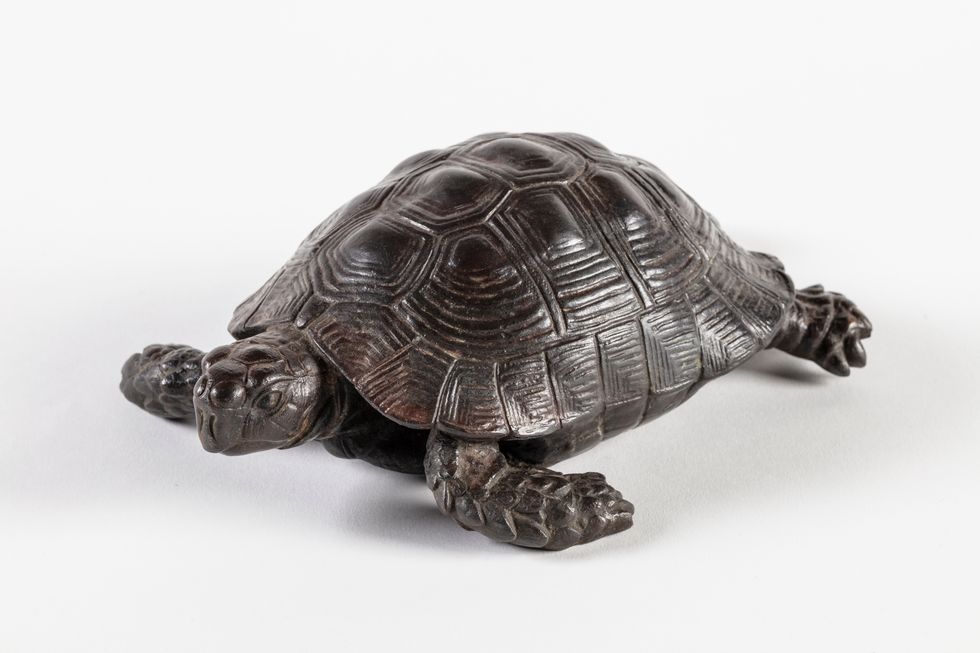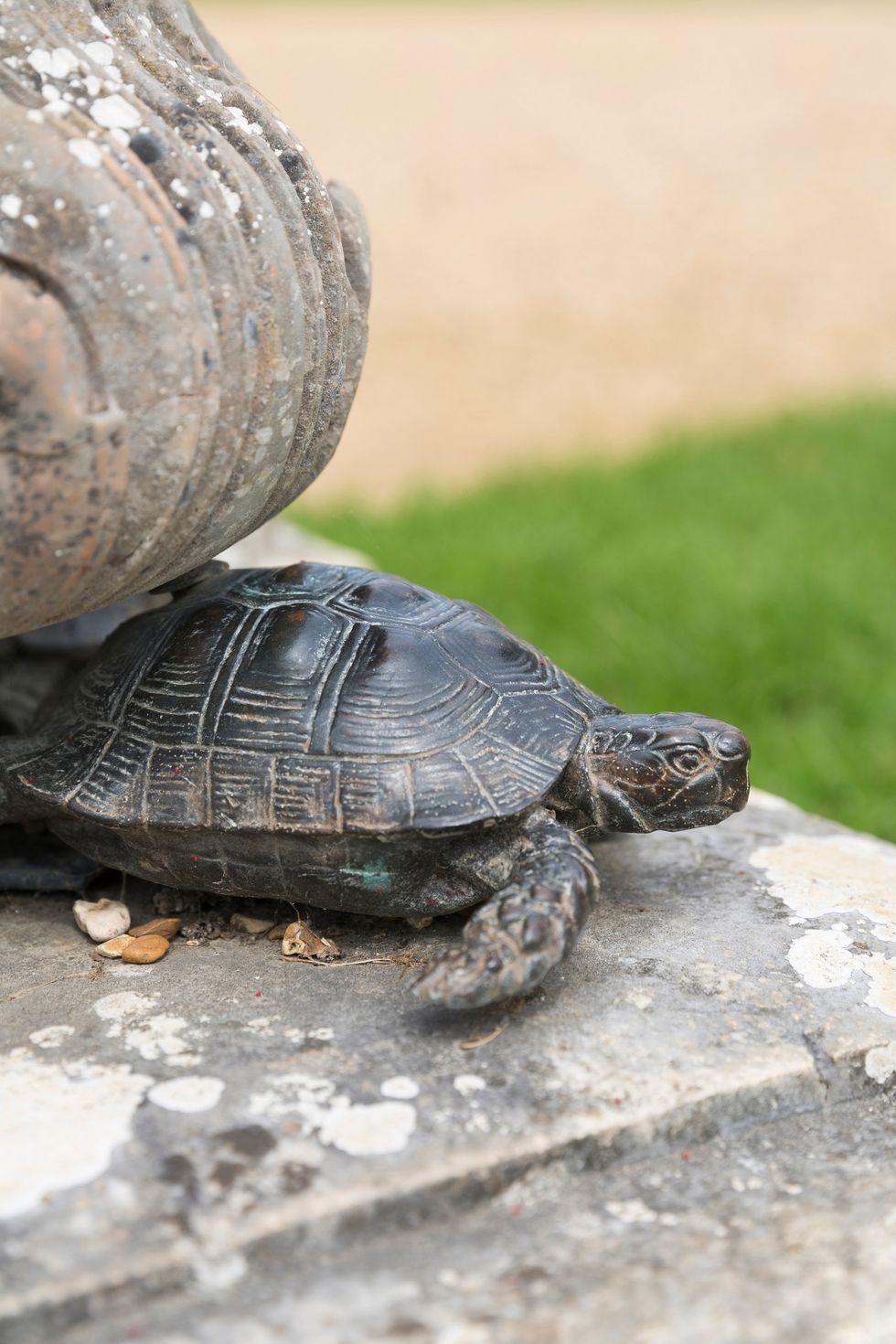Rod Minchin
Jul 14, 2021

Property curator Elena Greer in the entrance hall at Kingston Lacy, Dorset, with the recovered bronze tortoises (James Dobson/National Trust/PA)
Nearly 30 years after they were stolen from a country mansion, four historic bronze tortoises have returned home – after being spotted in an auction catalogue.
They were commissioned by 19th century collector and Egyptologist William John Bankes for his home at Kingston Lacy in Dorset
Bankes had a fondness for tortoises and kept several as pets and asked Italian-born sculptor Baron Carlo Marochetti to produce a set of 16 bronze sculptures for his garden.
The sculptures were to be used to support four Verona marble urns in the grounds of his opulent home, which showcased some of the finest art, decoration and sculpture.
The mould to cast the identical bronzes was made from one of Bankes’s own pets.
The tortoises supported the urns at Kingston Lacy for more than 140 years, admired by successive generations of the Bankes family and by National Trust visitors after the property passed to the charity in 1982.
On the morning of July 19 1992, one of the gardeners noticed that four of the tortoises supporting one of the urns had been stolen.
The theft was reported to the police, and staff swiftly removed the remaining bronze tortoises for safekeeping – replacing all 16 with replicas that have remained in place ever since.
Slow and steady – four bronze tortoises stolen from @NTKingstonLacy nearly 30 years ago have finally come home. A… https://t.co/OuHdM77onn— National Trust (@National Trust) 1626246305
James Rothwell, national curator for decorative arts at the National Trust, said: “Hope had faded over the years of recovering the stolen bronzes, and so I was astonished this spring to be contacted by Tim Knox, director of the Royal Collection and a former head curator at the National Trust, to say that he had seen a cast bronze tortoise, made by Marochetti, listed for auction.
“Could this be one of those stolen all those years ago?
“Close inspection of the tortoise revealed it was identical to those still at Kingston Lacy.
“Tell-tale signs that confirmed the identification were the hole in the tortoise’s carapace where it had been attached to the urn, and the Roman numeral ‘I’ branded into the bronze, which was part of Marochetti’s system for numbering each set of four.
“The tortoise’s owner had purchased it online and subsequently put it up for sale.
“Once he and the auction house learned that it was in fact a cast of Bankes’s beloved pet, they withdrew it from the sale and returned it to the team at Kingston Lacy.”
The trail of tortoise number ‘I’ eventually led to an antiques dealer who had acquired the set of four from a scrap metal dealer, completely unaware of their history.
He too was delighted to reunite the remaining three with their long-lost companion and all four have now gone on public display at Kingston Lacy.
Dr Elena Greer, property curator at Kingston Lacy, added: “We know that William John Bankes loved tortoises, not only because he kept them as pets and from the commission of the bronzes for the urns, but from other clues around the house, for example, he added tortoises to the bases of the two Italian giltwood candelabra in the saloon.
“It is clearly a creature that brought much pleasure to the family and so it is wonderful that we can welcome four of our tortoise residents back home after such a long time and can display them for our visitors to enjoy.”
Top 100
The Conversation (0)















